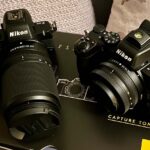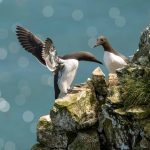Welcome to my blog post about how I managed to capture the perfect shot of a Barn Owl! It was March 1st 2022, and I was on my local moors in Darwen, Lancashire.
The weekend before, I had seen a Barn Owl while hiking and had a gut feeling that it was hunting daily at a small local disused quarry. So, I decided to investigate further.

I had both my Nikon Z50 and Nikon D3300 cameras with me, which turned out to be a lifesaver. When I got to the quarry, I got set up with my ghillie suit and bean bag resting on a stone wall. Stone walls can be a good way to conceal yourself, and after over an hour of waiting, all I saw was a breeding pair of kestrels nesting in the rock face of the quarry.
Just when I thought it wasn’t going to happen, all of a sudden, the Barn Owl appeared over the quarry!

I readied my camera (Nikon Z50) to start taking pictures, but just as I did, an elderly man who was standing a foot behind me loudly asked, “What is that?!”
This spooked me and the Barn Owl, and it flew away. As it did, I tried to get some rushed photographs, but the battery went on my Nikon Z50. What could have gone wrong did go wrong.
I turned around and answered the man, “That was a Barn Owl.”
Knowing the Barn Owl had gone further up onto the moors, I decided to go for a wander. I swapped my camera for my trusty Nikon D3300 and walked along a moor path when, all of a sudden, the Barn Owl flew right by me, heading back to the quarry.
I aimed my Nikon D3300 and snapped some rushed photographs, and I had gotten the perfect shot. Not bad for a ten-year-old entry-level DSLR camera!
For equipment:
I used my Nikon Z50 and Nikon D3300 cameras with a Sigma 150-600c lens. I also used camouflage ghillie and scrim netting to help conceal myself.
For the camera settings:
I used an F6 aperture as it was a bright day, but I wanted fast shutter speeds. I used a 1/2500s shutter speed to help freeze the bird in flight, and autofocus was set to continuous.
I think the D3300 only has nine points of focus, but that was enough.
ISO was set to auto, and lens stabilization was on because I was shooting handheld. The camera shoots at about four frames per second.
The day was a bright and clear morning, and I managed to get some great shots despite the setbacks.
Post-processing:
Done in Lightroom and only needed the basics. I adjusted the exposure, shadows, highlights, and contrast to get the image looking as good as possible.

In conclusion:
This experience taught me that old equipment can still save you, and to always keep your batteries charged! It was frustrating at the time, but it all worked out in the end.
My tips for anyone looking to capture a similar shot would be to be patient, use camouflage to blend in with your surroundings, and keep your camera settings appropriate for the lighting conditions. Charge those batteries!
Thank you for reading my blog post, and I hope you enjoyed it.
If you have any questions or would like to share your own wildlife photography experiences, please feel free to leave a comment below.
Till next time,
Scott



